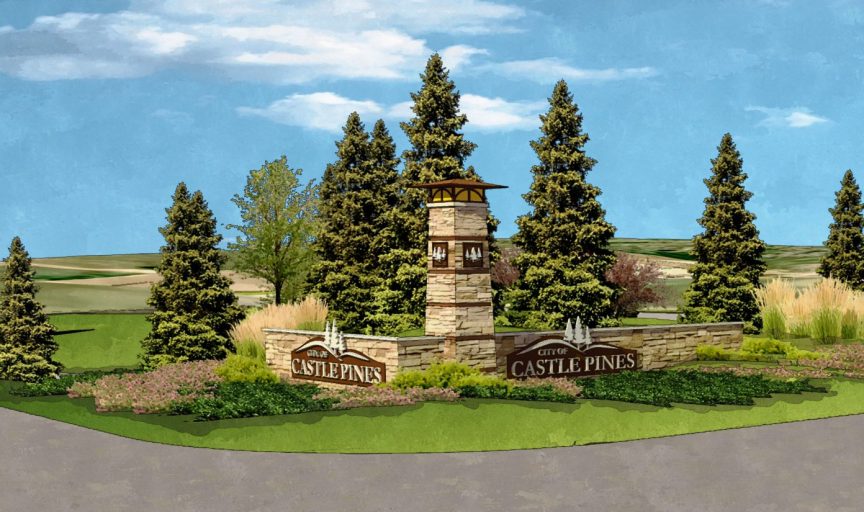Impactful Design for an Evolving Community
by Nick Troha, DTJ Designer
Quality communities realize the impact that smart planning and thoughtful design can have on their future. The City of Castle Pines has stellar neighborhoods, beautiful open spaces, and no shortage of breathtaking landscape views – and while many communities would feel content with this, they are stepping on the gas pedal with new initiatives in a time of unprecedented uncertainty.

One of the most important aspects of a community is the first impression. A crucial opportunity for this is the I-25 interchange that serves as the primary point of entry into Castle Pines, viewed by high levels of traffic from nearby Denver. While the current interchange looks typical to most others in the surrounding Denver metro area, the future monumentation plans are ambitious and will serve the purpose of announcing that you’ve arrived at Castle Pines. Inspired by the unique topographical conditions and local rock that is ubiquitous throughout the area, the primary bridge monumentation is designed to represent a bold and lasting vision that fits within the site’s natural character.

Highway monumentation is just a piece of a larger wayfinding initiative for Castle Pines, which also includes directional signage, entry monumentation that ties together all corners of the community, and a trails master plan. While recognizing the significance of a bold first impression, the everyday impact of this wayfinding plan will be most realized by residents, as these smaller, more detailed components are implemented.
The entirety of the community includes the well-developed west side of I-25 and the rapidly expanding east side. Within this juxtaposition of established and evolving areas lies the opportunity to connect all features of Castle Pines through a trails master plan and a family of wayfinding devices. This will give pedestrians a way of navigating their community, but also new ways to explore and connect regionally within the context of wayfinding components that respond to the natural setting. From a comprehensive view, this plan encourages residents and visitors to eat, spend, and play locally.

It is easy to lose sight of what an evolving community values most. But in a time that points toward a growing need for outdoor experiences, connectivity, and meaningful community improvements, Castle Pines has their sights set on purposeful change in the right direction.


 BACK TO BLOG
BACK TO BLOG